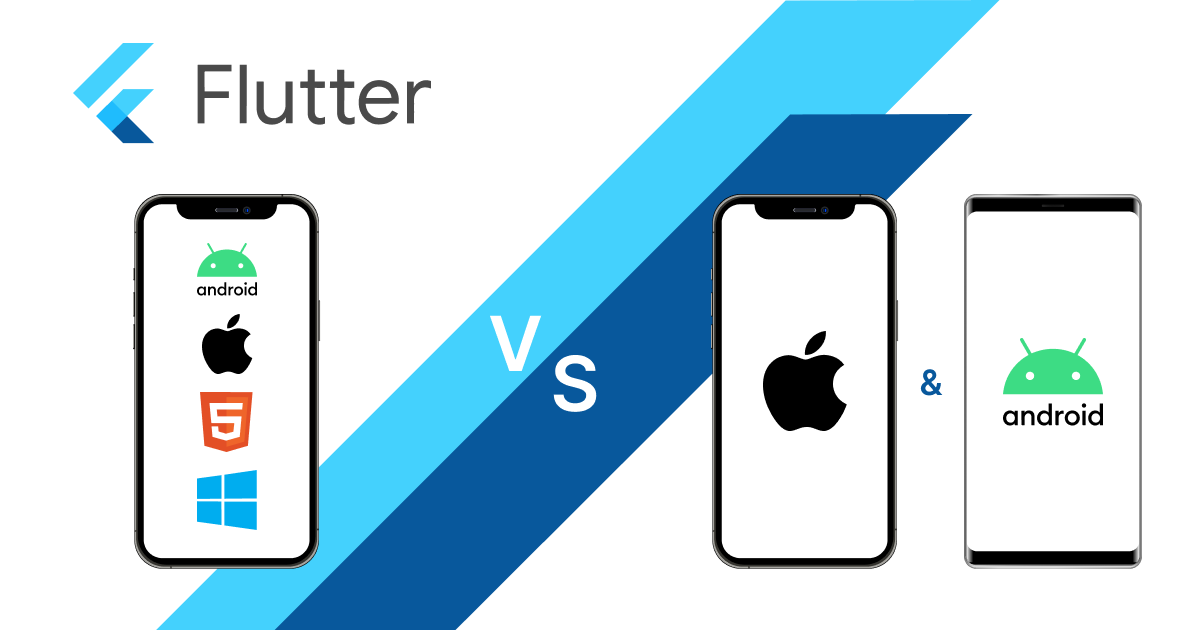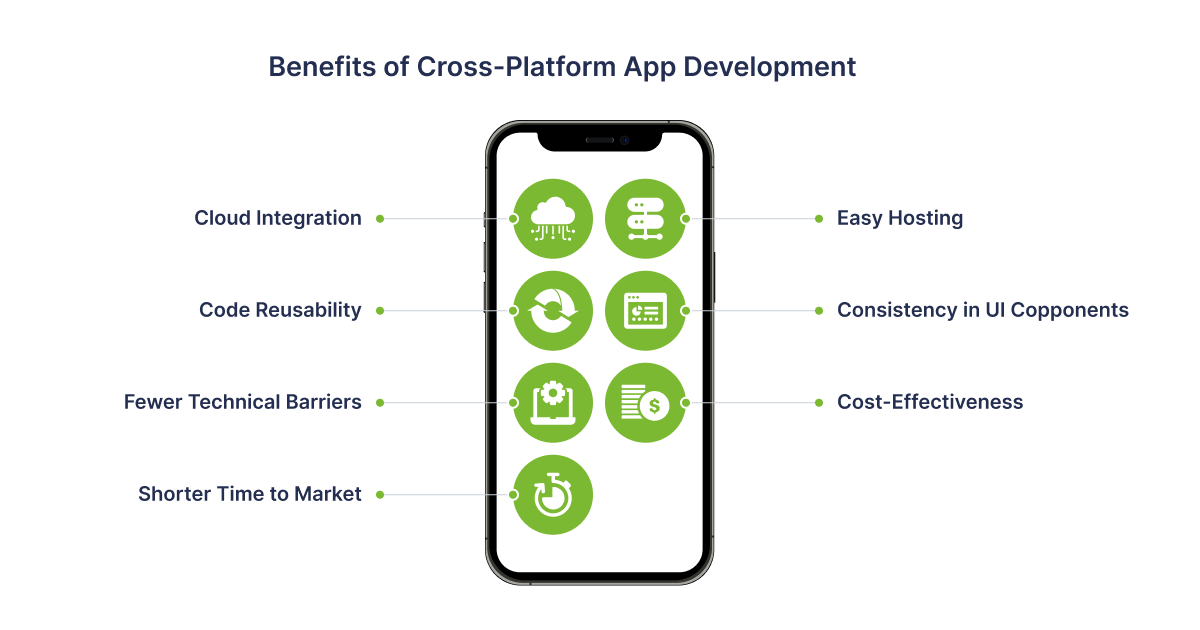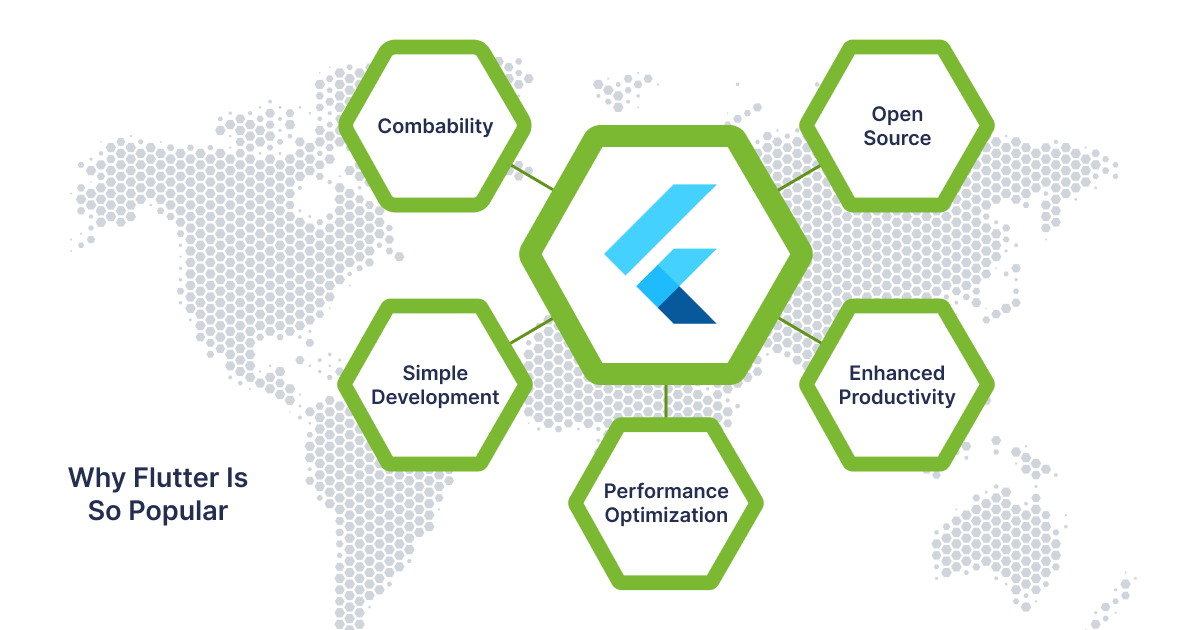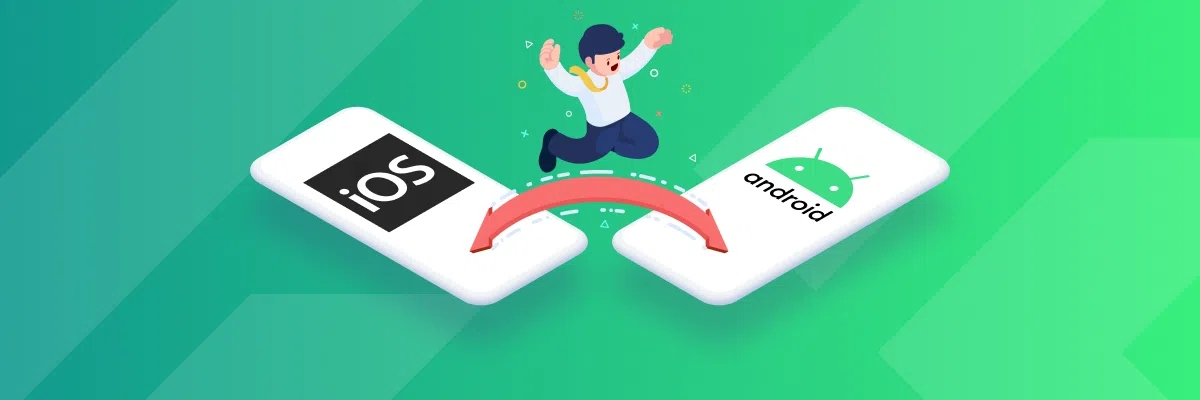Cross-Platform App Development with Flutter
Cross-platform mobile app development is a story about compatibility with operating systems.
At the initial stage of writing a native application, the difficulty lies in need to create a server part adapted to work on several platforms. Then at the next step, the problem of reprofiling the native code of one operating system to the features of another becomes relevant. In this regard, cross-platform mobile application development is increasingly in demand.

What cross-platform applications are
When answering the question "What is cross-platform application development?", they mean creating software components compatible with different operating systems. Ideally, once launched, the app works on both Android and iOS. Translating source code to native one ensures compatibility with multiple mobile operating systems.
Cross-platform applications are written using such frameworks as React Native, Xamarin, Flutter, etc. By the way, the latter one is recognized as the most successful and is widely used by developers today. Google was promoting it; that fact says a lot. Applications of world brands such as BMW, Alibaba, Toyota, etc. have been working on this basis.
Why is cross-platform application development beneficial?
- The application is presented on several platforms at once, which allows you to expand the audience of users;
- Unified code is a resource-saving for writing native codes on multiple platforms;
- Work on the project is faster, and the launch occurs in a short time;
- Most of the data can be adapted to a new business project, which also saves money and reduces the number of errors.
But there are also disadvantages:
- The interface on each platform could be better in terms of being user-friendly, and adapting the interface for each platform takes time and money, reducing the economic benefits.
- Constant improvement of frameworks for cross-platform development can mean less effective code support and imperfections in the functionality of applications written on early versions of frameworks.
- Flexibility is lower: there are problems when integrating with other devices and OS.
So, cross-platform development can be a good solution for your business, provided that all the circumstances and the specifics of the niche are evaluated.

Cross-platform technologies and platforms
Having decided what cross-platform applications are needed for in a particular case, developers use approaches for cross-platform development:
- A hybrid approach, in which first the core of the application is created in HTML5 JavaScript, and then a "wrapper" for the platform is developed;
- A rapid development of mobile applications when programming tools without code are used;
- Universal Windows programs as a single code base for Windows devices;
- Progressive Web Apps (PWAs) – websites that look and function like mobile apps. Web applications are created to enhance the benefits of using mobile device features. At the same time, the user does not have to download from the platform and install a mobile application.
Again, the choice of cross-platform development technology is dictated by the specifics of the project, the tasks set, and several other factors.
In each case, the customer should consider the individual characteristics of doing business. So, it matters what type of devices your audience uses, how much time is available for development, what are the features of the application (are there "heavy" graphic elements, for example), and finally, what are the tasks and strategy of the company. The choice in favor of a native or cross-platform application is made considering these factors.

Why Flutter is so popular
The total market share of Flutter apps is 3.62%. More than 25,000 applications have been written on it, and this number is constantly growing. Why is this cross-platform technology so attractive? To begin with, let's take a short digression into the history of mobile application development: if just a decade ago it was a need to code for such operating systems as BlackBerry, Windows Phone, Android, and iOS, currently there are mainly only the last two platforms left.
When choosing technologies for creating mobile applications, customers frequently wish to save money by unifying the program code for both platforms. An example of solving this problem is the Flutter framework. The developers positioned the technology as a cross-platform for mobile applications, desktop components, and web development. The universal nature of the tool has been proved practically.
UI/UX restrictions on Flutter
Writing unified code for two platforms does not allow you to create a native interface for each platform. On iOS, there is no standardized approach to creating an interface. Still, Android devices can be brought to a generally accepted look through standard interfaces that facilitate the user's work. Developers use this set of UI / UX elements in their work. This point is more of an advantage than a disadvantage of the cross-platform approach.
The Flutter framework proposes a solution to the interface problem: an intuitive, friendly interface is made for each operating system. However, in this case, one can expect less than 50% of cost savings since by attracting resources to create two interface options, you can save a maximum of 30%. Due to this, Flutter is suitable for applications with a standardized interface — CRM and ERP.
Actually, this explains the business logic of the cross-platform approach. The emphasis is not on UI / UX elements but on business processes — data processing, communication with the server, etc.
Is Flutter development cost-saving?
Using the Flutter framework is even less cost-saving if you have to work with native SDKs.
"API tools used in a cross-platform approach negate the savings that a client seeks by choosing Flutter. In this case, it is necessary to write native code for each platform and connect third-party libraries to work with hardware devices. A striking example is the development of applications for medical devices that are connected via Bluetooth," explains Viacheslav Bukhantsov, CEO and software architect at Software Development Hub.
When should you choose Flutter?
By choosing between a native and cross-platform approach, developers should consider the perspectives of the project and evaluate the benefits of such a solution. When is it worth switching from native development to cross-platform development with the Flutter framework? This decision is justified if the development of the code is relatively easy. As for the reverse process — moving from Flutter to a native platform is advisable when there are difficulties in dealing with UI / UX elements and connected devices.
Pros and cons of cross-platform app development with Flutter
|
|
Flutter Cross-Platform Development |
|
Pros |
Faster Development Time: With Flutter, developers can build high-quality and visually attractive apps in less time as compared to native app development. |
| Single Codebase: With Flutter, developers can write the code once and run it on multiple platforms, thus saving time and effort. | |
| Hot Reload Feature: Flutter's hot reload feature allows developers to quickly see the changes they make to the code, speeding up the development process. | |
| Attractive UI Design: Flutter provides a rich set of customizable widgets, animations, and transitions, making it easier to build visually appealing apps. | |
| Easy Maintenance: With a single codebase, it is easier to maintain the app, fix bugs, and add new features. | |
|
Cons |
Performance Overhead: Despite its faster development time, Flutter can have performance overhead compared to native app development, especially for resource-intensive apps. |
| Limited Access to Native APIs: Although Flutter provides a large number of APIs, there may be some native APIs that are not accessible, leading to limitations in functionality. | |
| Community & Tooling Issues: Although Flutter has a growing community, it may still lack the level of support, resources, and tools compared to native app development. |
Software Development Hub is a team of like-minded people with broad experience in software development, web and mobile engineering. We provide clients with a full comprehensive custom development cycle, including architecture planning, business analysis for clients, UI/UX design, quality control, project management and support.
Categories
About the authors
Share
Need a project estimate?
Drop us a line, and we provide you with a qualified consultation.








